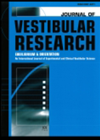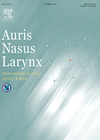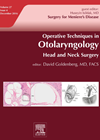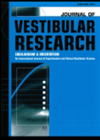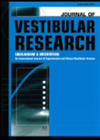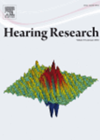
Journal Reviews
Otolith malfunction can be a cause of orthostatic dizziness
This prospective study evaluated otolith function with vestibular evoked myogenic potentials (VEMPs) and subjective visual vertical / horizontal (SVH) tests in 50 adults with normal hearing between the ages of 18 and 50 years. The authors hypothesised that there are...
Lateral skull base surgery using the endoscope
Endoscopic lateral skull base surgery could be performed via less invasive techniques due to wide panoramic visualisation of the operative field. With less invasive techniques, patients have been shown to require shorter recovery time and reduced postoperative pain. In this...
Does the season affect the diagnosis of vestibular disorders?
There are mixed results in the literature regarding seasonal variation in the presentation of various peripheral vestibular disorders. In this large population study involving over 20,000 patients recruited from 116 ENT practices across Germany, the authors analysed the demographic characteristics...
Association between Meniere’s disease and vestibular migraine
Meniere’s disease (MD) and vestibular migraine (VM) are two conditions with overlap in their symptoms. There is often a lack of understanding regarding symptom-based differentiation between them. MD presents with episodic vertigo, fluctuating hearing loss and tinnitus. MD has been...
The effect of vertigo on sleep
The authors analysed data of 20,950 individuals who completed the balance and dizziness supplements of the ongoing NHIS survey in 2008. The survey used a strict algorithm to identify individuals reporting vestibular vertigo and information on sleep duration and a...
Wearable sensors for assessment of vestibular disorders
This prospective preliminary study describes the use of commercially available wearable inertial sensors (Mobility LabTM) in assessing the functional ability of individuals with vestibular disorders. Traditionally the Romberg’s, Tandem Walking and Fukuda’s Stepping tests were used to clinically evaluate individuals...
Associated findings in MRI used for detecting acoustic neuroma
Presently, gadolinium enhanced magnetic resonance imaging is the ‘gold standard’ for investigating acoustic neuroma. There are often ‘incidental’ findings that may or may not be significant. In this study of 109 scans, the authors noted an uptake of 0.9% for...
Performing a labyrinthectomy
This article takes the reader through the two main approaches for a labyrinthectomy for intractable Meniere’s disease. These are the traditional trans-mastoid and the less well known trans-canal. They state that according to the House clinic, the selection criteria for...
Acute peripheral vestibulopathy: is it really neuritis?
The pathophysiology of acute vestibular dysfunction has been debated for decades. By seeking to clarify the underlying aetiology, this study muddies the waters further by advocating systemic and intratympanic steroids as first line treatment if the aetiology is uncertain. The...
How effective is vestibular rehabilitation in bilateral vestibular failure?
In patients with bilateral vestibular hypofunction (BVH), the outcome of vestibular rehabilitation is mixed. The aim of the study was to identify factors associated with outcome of vestibular rehabilitation (VR) in patients with BVH. A retrospective case notes review identified...
Otolith dysfunction in congenitally deaf adults
This paper helps to further define the profile of ocular and cervical vestibular-evoked myogenic potentials (o and c VEMPs) in patients with congenital profound sensorineural hearing loss (PSHL). It highlights the prevalence of otolith (saccular and utricular) dysfunction that exists...
Horizontal nystagmus: vestibular neuritis or lateral canal BPPV?
A horizontal nystagmus due to lateral canal (LSC) BPPV that is present in the upright position, that changes direction with head turn in the horizontal plane has been termed ‘pseudo-spontaneous nystagmus’ (PSN) because it mimics that of vestibular neuritis. The...



